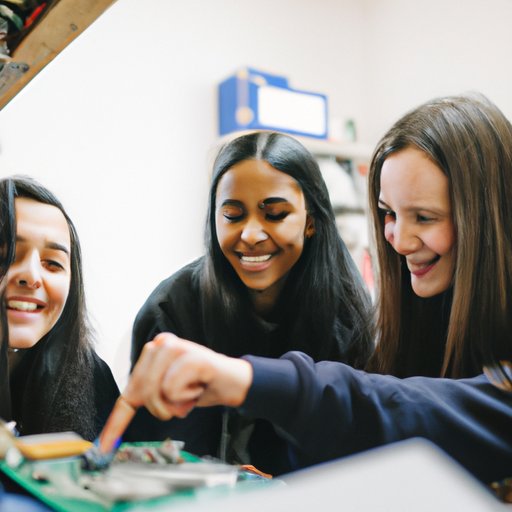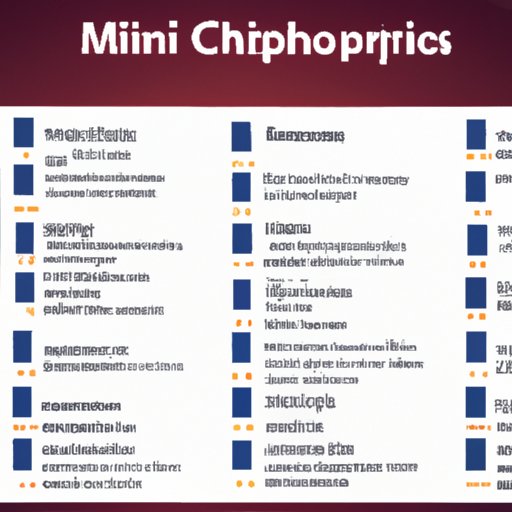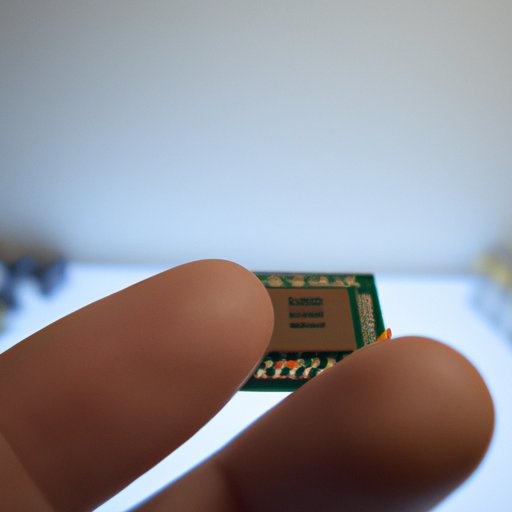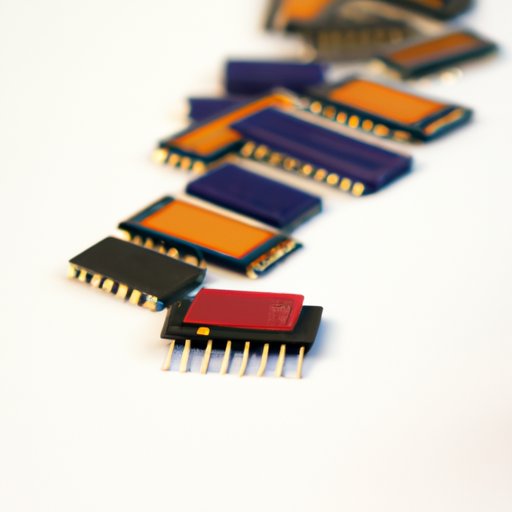Introduction
A microchip is a small piece of electronic hardware consisting of interconnected microscopic components. It is used to store and process information and has revolutionized the way we use technology today. Microchips are found in everything from cell phones to computers, and they are essential for modern life. But what exactly is a microchip and how does it work? This article will explore these questions in greater detail.

Exploring the Components of a Microchip and How They Work Together
Microchips consist of several components that work together to form a functioning circuit. The most common components include transistors, diodes, capacitors, resistors and connectors. Each component plays an important role in the overall functioning of the microchip.
Transistors are tiny switches that can be used to control the flow of electricity. They are the building blocks of any microchip and are responsible for controlling the signals that pass through the chip. Diodes are semiconductor devices that allow electricity to flow in one direction only. They are used to control the voltage levels within the chip. Capacitors are used to store energy and regulate power flows. Resistors are used to limit current flow and maintain a certain level of resistance. Connectors are used to join components together and create a complete circuit.
These components work together to create a functioning circuit. When electricity is applied to the circuit, the transistors open and close, allowing the current to flow through the circuit in a specific pattern. The other components regulate the voltage, current and resistance levels, ensuring that the circuit functions properly.
An Overview of the Process of Creating a Microchip
Creating a microchip involves several steps: design, manufacturing and testing. First, engineers must design the circuitry of the chip. This involves drawing out the connections between the various components and determining how they should interact with each other. Once the design is complete, the chip must be manufactured. This involves etching the circuitry onto a silicon wafer and then packaging it into a chip.
Finally, the chip must be tested to ensure that it is functioning properly. This involves running tests to check the functionality of the chip and making sure that all of the connections are working correctly. Once the chip has passed these tests, it is ready for use.
The Basics of How a Microchip Works: From Design to Application
In order for a microchip to function, it must go through several stages from design to application. First, engineers must design the circuitry of the chip. This involves drawing out the connections between the various components and determining how they should interact with each other. Once the design is complete, the chip must be programmed. This involves writing code that tells the chip how to respond to various inputs and commands.
Once the programming is complete, the chip must be embedded in a device. This involves physically attaching the chip to the device and connecting it to the necessary power supply. Finally, the device must be tested to ensure that it is functioning properly. This involves running tests to check the functionality of the chip and making sure that all of the connections are working correctly.

A Guide to Understanding the Different Types of Microchips
There are several different types of microchips available today. Memory chips are used to store information and data. Processor chips are used to process instructions and perform calculations. Programmable logic chips are used to control the behavior of other devices. And mixed-signal chips are used to combine analog and digital signals.
Each type of microchip has its own unique characteristics and applications. Memory chips are used in computers and other digital devices to store data and information. Processor chips are used in computers and other digital devices to process instructions and perform calculations. Programmable logic chips are used to control the behavior of other devices, such as robots or automated systems. And mixed-signal chips are used to combine analog and digital signals for applications such as sound processing and wireless communication.

A Look at the Impact of Microchips on Our Lives Today
Microchips have had a profound impact on our lives today. They have enabled us to automate processes, increase computing power, store large amounts of data, and reduce the size of our devices. Automation has made everyday tasks easier and more efficient, while increased computing power has enabled us to solve complex problems faster than ever before.
Data storage has also been revolutionized by microchips. We can now store vast amounts of data in small, compact devices. And finally, microchips have allowed us to miniaturize our devices, making them more portable and convenient. All of these advances have had a huge impact on our lives today.
Conclusion
Microchips are an essential part of modern life. They are used to store and process information, and they are found in almost every electronic device. This article has provided an in-depth look at how a microchip works, from design to application. It has also explored the different types of microchips and their impact on our lives today. With this knowledge, you should now have a better understanding of how microchips work and why they are so important.
(Note: Is this article not meeting your expectations? Do you have knowledge or insights to share? Unlock new opportunities and expand your reach by joining our authors team. Click Registration to join us and share your expertise with our readers.)
